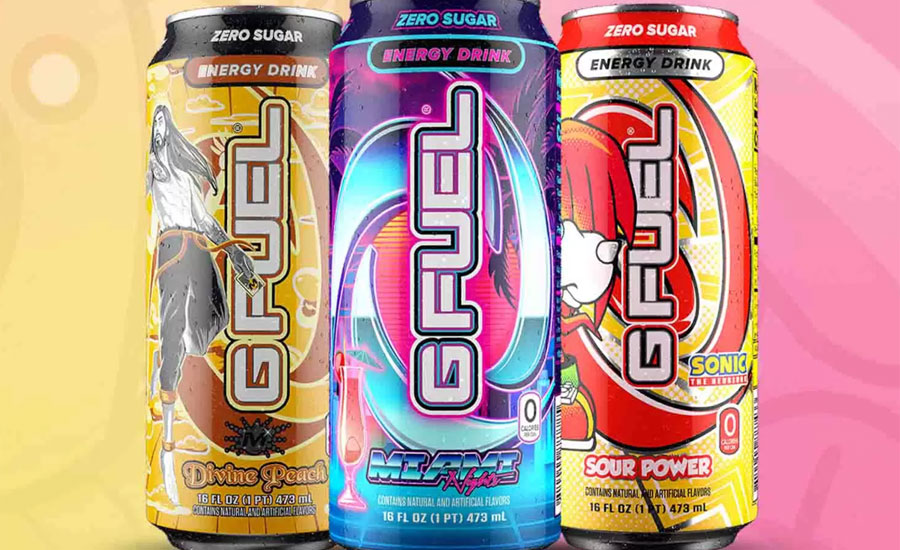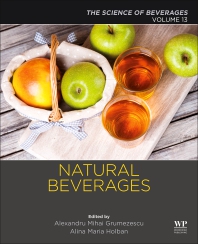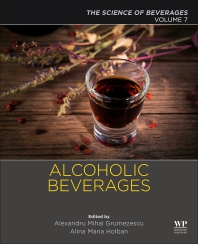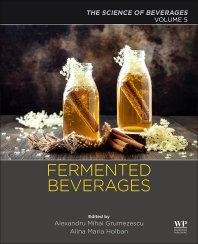R&D Feature
Functional solutions, performance drink offerings span across categories
Plant protein takes on larger role in the performance beverage space

Image courtesy of Rockstar Energy Drink
Known for his influence on Western theater, culture and politics, Irish playwright George Bernard Shaw is quoted for once having said: “Give a man health and a course to steer, and he’ll never stop to trouble about whether he’s happy or not.” Today, as more consumers continue on a functional beverage course, experts note that many are turning to performance beverages to help manage their overall well-being.
“Consumers are looking for more than just hydration in their beverage products,” says Carla Saunders, senior marketing manager for high-intensity sweeteners at Minneapolis-based Cargill. “Increasingly, they’re turning to food and beverages to help manage health and wellness. It’s a trend that has only been amplified by the COVID pandemic.
“As a result you’ll find the influence of health and wellness trends in almost every food and beverage category,” she continues. “In a functional drink like performance beverages, they’re especially evident as athletes and active consumers look for products that do more than hydrate. Alongside enhancing overall performance there’s opportunities for products that provide energy support, enhance mental focus or promote immune health.”
Max Maxwell, manager for marketing intelligence at Chicago-based Glanbia Nutritionals, echoes similar sentiments, noting that global consumers are seeking such beverages to support a healthier lifestyle, “manage their weight and overall help their bodies to feel better.”
“These health and wellness trends are gaining more traction across the globe with better nutrition and proactive preventive approaches to beverages influencing the performance beverage market,” he says.
Philip Caputo, marketing and consumer insights manager at Brooklyn, N.Y.-based Virginia Dare, notes that with consumers continually focused on well-being, the performance beverage market is expected to only further expand.

Image courtesy of GFuel
“We predict performance beverages will continue to expand to mainstream products as consumers gravitate toward food-not-pharma in search of holistic health products,” Caputo says. “Grain-free, microbiome gut health, whole food powders, shakes and supplements are expected to increase throughout the rest of the year and beyond. This is driving some new, exciting products to hit the market and catch fire with the sports nutrition consumer base.”
Still, as offering products with specific health benefits remains “hot,” Cargill’s Saunders points to consumers consistently ranking sugar reduction as the number one way to make beverages healthier.
“In fact, sugar reduction is the leading dietary change consumers made in the past year,” she says. “According to our proprietary research, 62% of U.S. consumers say they are likely to check the amount of sugar before purchasing a new product.
“Sports beverages are right in the center of this trend as products made with stevia posted a staggering 135.4% CAGR (2017-21),” Saunders continues. “Plant based, especially plant proteins, continues to remain popular in the sports beverage space, too. Consumers have long associated protein with a variety of health benefits, from satiety and weight management to physical performance and muscle strength.”
Clean label ingredients trend upward
As consumer interest in label-friendly products remains strong across beverage categories, experts note that performance offerings with “natural” claims are resonating strongly with consumers.
Health-conscious consumers tend to gravitate toward conscientious consumption, says Vaughn DuBow, global director of marketing for microbiome solutions at ADM, Chicago.
“These shoppers are scrutinizing their beverage purchases, looking for clean labels,” he explains. “Our research shows that many consumers say that simple, recognizable ingredients impact their purchasing decisions.”
With this heightened consumer interest in clean label ingredients, experts note that, in turn, beverage-makers are responding.
“Performance beverages are trending more natural and organic in response to consumer interest in cleaner beverages,” Glanbia’s Maxwell says. “The growth of BANG energy drinks built on a more natural energy positioning is a good example of this. Another would be the growth of Orgain and Vital Protein beverages and the large investment Nestle Health Sciences has made in these ‘healthier’ performance beverages.”

Image courtesy of GoodSport Nutrition
Further, as more brands incorporate clean label ingredients, ingredient transparency is important, notes Denisse Colindres, nutrition communication manager at BENEO, Parsippany, N.J.
Colindres suggests brand owners also should seek out clean label ingredients with proven performance benefits to develop appealing concepts and final products that meet consumers’ need states.
“Consumers should not be misled and pay for products that don’t offer a real benefit,” she says. “Ingredients that are used in performance beverages to meet claims should be supported by robust human clinical data.”
Cargill’s Saunders notes that with plenty of pressure on brands to deliver clean label products, sustainability matters, as does ethical sourcing practices.
“It’s one of the reasons we’ve prioritized creating traceable, transparent and sustainable supply chains across our portfolio,” she says. “Our Stevia Sustainability Agricultural Standard, for example, has been externally verified and benchmarked as a silver level program by the SAI Platform’s Farm Sustainability Assessment 3.0.”
Protein plays a starring role
Whereas protein is associated with a variety of health benefits, experts highlight how its various formulations support endurance, recovery and other physical activities.
Protein is one of the most commonly supplemented forms of macro nutrients for recovery, says Corbin Hohl, research manager at Glanbia Nutritionals.
“Endurance training and strength training have many overlapping needs,” he explains. “Protein plays a critical role in both by allowing muscle tissues to repair and perform at their optimal level relative to without protein.”
As casein and whey are typical protein options, ADM’s DuBow notes that plant protein is taking on a larger role in the performance beverage space.
“Specifically, soy has a PDCAAS of 1.0, making it the only non-animal protein that has a complete amino acid composition,” he says. “Soy is an excellent additional or alternative protein source for performance beverages, and our clean tasting soy protein isolates provide exceptional water binding, viscosity and emulsification needed to create consumer-preferred, protein-packed shakes, energy drinks, juices and more.

Image courtesy of Optimum Nutrition
“Moreover, blends of plant proteins can create even more consumer-preferred sensorial experiences and quality protein options,” DuBow continues. “We leverage our MaxFlex blend of pea with rice proteins for high-protein beverages, including powdered and meal replacement drinks. This blend brings fantastic taste and texture, as well as on-trend protein diversity and quality with a higher PDCAAS (0.95) than the two protein sources could provide individually.”
Christine Addington, technical service manager at Cargill, adds that with protein’s positive associations, pea protein is well suited for application.
“PURIS pea protein delivers 80% protein with a high protein digestibility-corrected amino acid score (PDCAAS),” she notes. In addition, pea protein is high in branched-chain amino acids like leucine, the type of amino acids used to build muscle and provide energy, she says.
“While pea protein contains all the essential amino acids, it is not a complete protein because two of the amino acids, methionine and cysteine, are present in relatively low amounts,” Addington explains. “To compensate, formulators can blend pea protein with a complementary protein source to make complete protein claims. Another option is to add extra pea protein to hit the target protein claim.”
As many brands look to reformulate existing products or develop new products using alternative plant protein options, “formulators can now strategically use pea protein ingredients to overcome these challenges,” notes Tara Kozlowich, vice president of marketing at Merit Functional Foods, Winnipeg, Manitoba.
“Our newest ingredient, Peazazz C, is just one of those options,” she says. “This is a unique pea protein with exceptional solubility and low viscosity ― for a smooth texture, without sedimentation in [ready-to-drink] RTD beverages.”
Nutrients, vitamins and minerals remain key
As ingredients such as beta alanine and I-carnitine are commonly seen in performance drinks, experts note that including such ingredients are key to help meet active consumers’ nutrition goals.
“Plus, electrolytes and isotonic properties are highly sought-after by active nutrition consumers for reasons like hydration, recovery, balanced mood and performance benefits,” ADM’s DuBow says.
Electrolytes play a critical role in the performance beverage space, Glanbia’s Hohl adds.
“Especially when large quantities of sweat or intense heat is involved in performance, replacing the natural electrolytes lost via perspiration,” he explains. “This supplementation is critical in preventing cramping and other intense side effects of mineral loss.”
As athletes aim for higher fat burning rates as a means to improve endurance, BENEO’s Colindres notes that the manner of carb-energy supply matters.
“Extended-release carbs should be the preferred choice,” she says. “Palatinose is a fully available carbohydrate. It supplies the body with carb energy or ‘fuel’ (4 kcal/g) and so contributes to the daily energy intake from carbohydrates.
“Besides the target group of athletes, Palatinose can also be a great tool for regular actives,” she continues. “Sustained glucose supply from Palatinose supports brain activity, with potential for longer cognitive performance.”
As electrolytes, vitamins, minerals and protein can all work together for an elevated performance beverage, ADM’s DuBow notes that these ingredients also work well with botanicals and gut microbiome-supporting solutions.
Such added combinations “offer highly appealing characteristics to consumers, including support for digestive and immune function, metabolic health, weight management, energy, recovery and more,” he says. “Within our vast portfolio of botanical extracts, guarana is specifically an excellent option for the active nutrition space, as it is a popular source of caffeine, helping meet needs for stimulant energy and performance.
“Botanical ingredients may also help reach clean label targets, as consumers are linking botanicals with several characteristics, such as sustainable, natural, better-for-me and trustworthy,” he continues. “With our technical expertise, we help beverage brands bring these different ingredients and solutions together for multifunctional performance beverages.”
Limitless potential
With functional, clean label ingredients trending across beverage categories, experts note that what constitutes a performance beverage seems almost boundless.
“For instance, we’re seeing fruity tonic waters with protein and prebiotics, RTD teas with botanicals and probiotics and even carbonated soft drinks with low and no sugar along with key vitamins and minerals,” ADM’s Dubow says. “Interestingly, RTD hybrid coffee drinks with either dairy-based or plant-based milk, along with protein and amino acids, are emerging in this space.
“Energy shots are also gaining traction, as they can conveniently fit into busy schedules for a quick pick-me-up or right before a workout,” he continues.
Cargill’s Saunders notes that, with functional ingredients finding their way into all kinds of beverages, including waters, energy drinks and even coffee, performance ingredients are transcending all beverage segments ― not just performance drinks.
“Where do we begin? Performance ingredients can be used in any beverage category ― from plant-based milks to coffee creamers to energy drinks to sparkling waters and beyond,” Virginia Dare’s Caputo says. “We’re committed to pushing our customers to think outside the box when it comes to the applications that can deliver performance ingredients.
“There’s not much that we love more than dreaming up a completely unique, delicious flavor and format combination that uses key functional ingredients,” he continues.
Looking for a reprint of this article?
From high-res PDFs to custom plaques, order your copy today!









